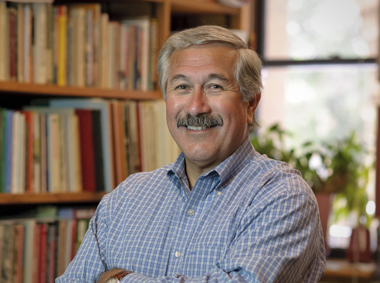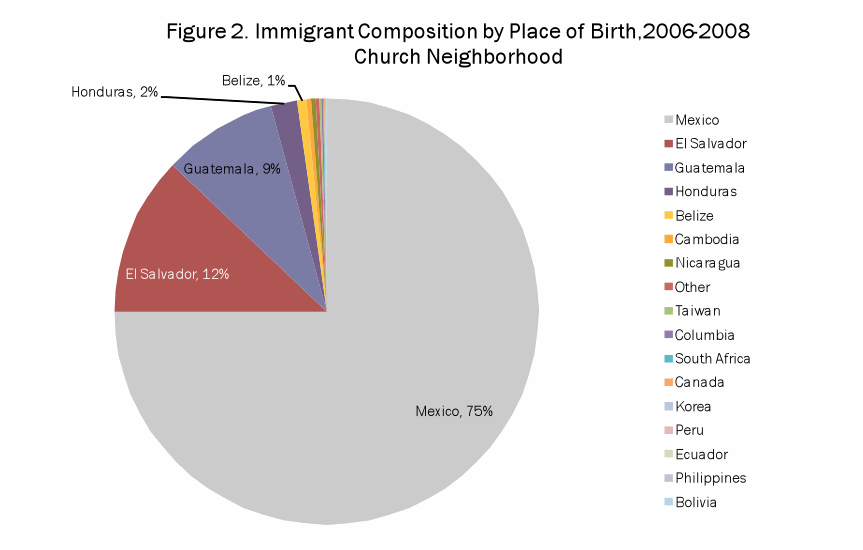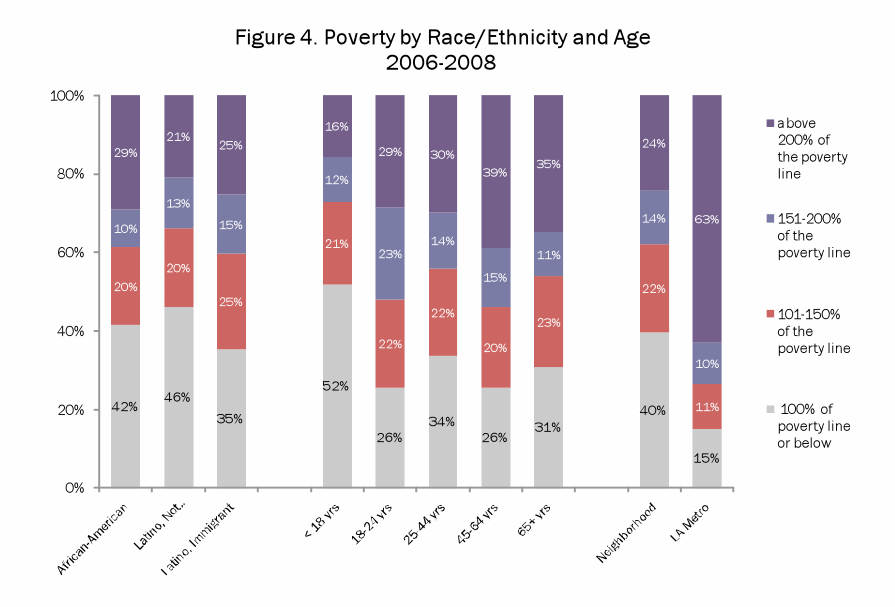 In a bright blue classroom on MacArthur Park’s busy 8th street, Maria Hernandez is ready to learn. She has found a seat in the front row. Her books are neatly gathered on her desk, and she listens intently to her teacher’s instructions. Her teacher, Mr. Jorge, writes a sentence on the board.
In a bright blue classroom on MacArthur Park’s busy 8th street, Maria Hernandez is ready to learn. She has found a seat in the front row. Her books are neatly gathered on her desk, and she listens intently to her teacher’s instructions. Her teacher, Mr. Jorge, writes a sentence on the board.
With her red pen in hand, Hernandez copies the sentence down in her workbook. She is a model student and a grandmother — who came to the United States from El Salvador. Her whole life, Hernandez never knew how to read a word or even write her address.
“In my country, I couldn’t study. We lived in the countryside and the schools were very far. And because we needed to work, there wasn’t time for us to be sent so far to school,” says Hernandez in Spanish.
She was resourceful, like many newcomers to the U.S., and found a job at a restaurant where she worked for five years. But when new owners wanted her to take food orders, she couldn’t and the owners fired her.
Everyday hundreds of thousands of immigrants, most from Latin America, go to work in the gardens, restaurants and homes of Los Angeles. But an estimated 200,000 of them navigate the sprawling metropolis unable to read. Approaching its 20th year anniversary, Centro Latino for Literacy has been trying to change the reality illiterate immigrants face.
“We see ourselves as bridging that gap between the preliterate and English,” says Veronica Flores-Malagon, the programs manager at the nonprofit where Hernandez is studying.
When students first come to Centro Latino for Literacy they don’t learn English. They learn to read and write in Spanish. Illiterate Spanish-speakers often want to dive into English courses, but if they are unable to read in their own language they get left behind, says Flores Malagon.
“To advance in English, you have to have a strong foundation in your own language,” she says.
More than 3,000 students have gone through Centro Latino for Literacy courses. Most of those students are women.
“The root cause is poverty,” says Flores-Malagon. Illiteracy is more prevalent among women because large families often will only send the men to school, she adds.
The center offers two basic literacy classes. The first is a 100 hour computer-based program called Leamos, translated “We Read,” which can be completed from anywhere with internet access.
Once students pass that class they move onto Listos Functional, a lecture style course, which prepares students with skills like spelling, reading directions and buying groceries.
“They learn all these functional things you and I do everyday and we don’t even think about, like how does math and literacy factor into these everyday duties,” says Flores-Malagon.
Those everyday duties are challenging, even in Spanish-speaking neighborhoods. Many illiterate Latinos are ashamed to even tell relatives they can’t read or write.
“We want to help them develop self-esteem so they can help themselves, because we are just the vehicle and all the talents and motivations lie in the students,” says Flores-Malagon.
Most students are motivated to finish the courses because they want to learn English. It’s the number one reasons students come to the center. Hernandez says that’s her goal.
“Now when I finish this class, when I know all the letters in the alphabet, I’m going to study English, because I love English,” says Hernandez.
She’s taking her desire to learn to the streets. Hernandez is part of a group of students at the center called, promotores, who go out into the community and share information about the center.
“Sometimes I see people who are like how I was before. And so, I invite them and tell them, ‘let’s go,’ ” says Hernandez. “It’s beautiful because when you know a little bit, it gives you the will to keep studying.”
Here’s how you can get involved at Centro Latino for Literacy. Visit the website at www.centrolatinoliteracy.org or on Facebook or call their main line at 213-483-7753.









 When Stanford Professor Al Camarillo asks people if they know about Compton, he usually gets a response filled with stereotypes.
When Stanford Professor Al Camarillo asks people if they know about Compton, he usually gets a response filled with stereotypes.









